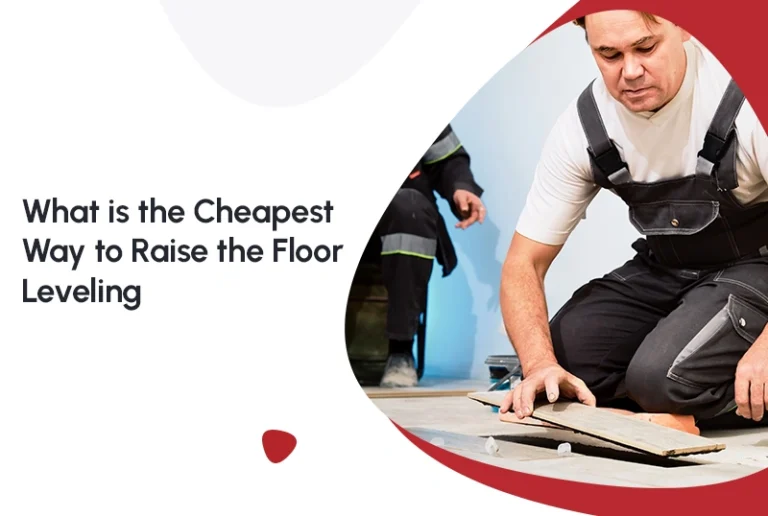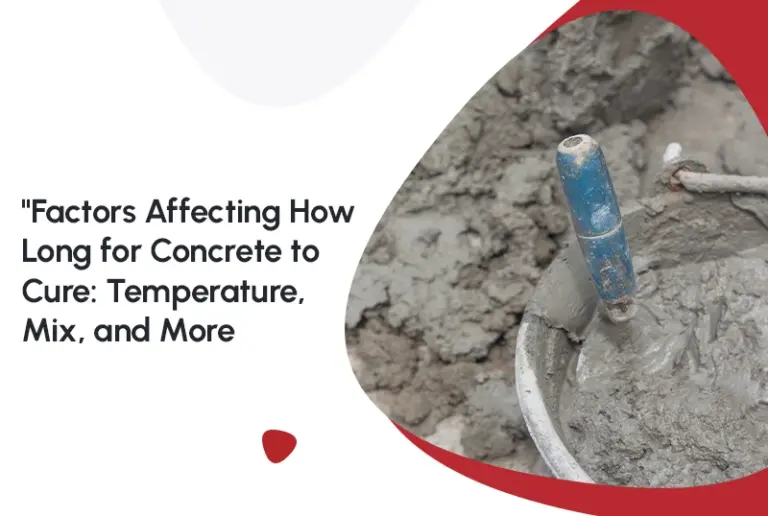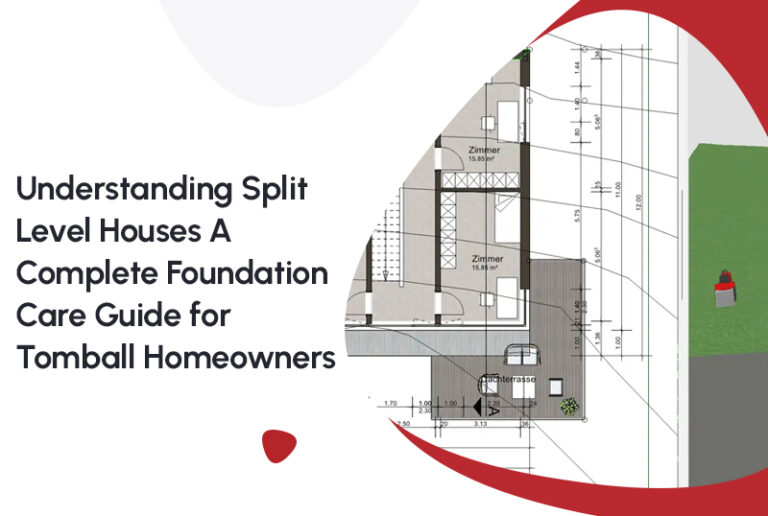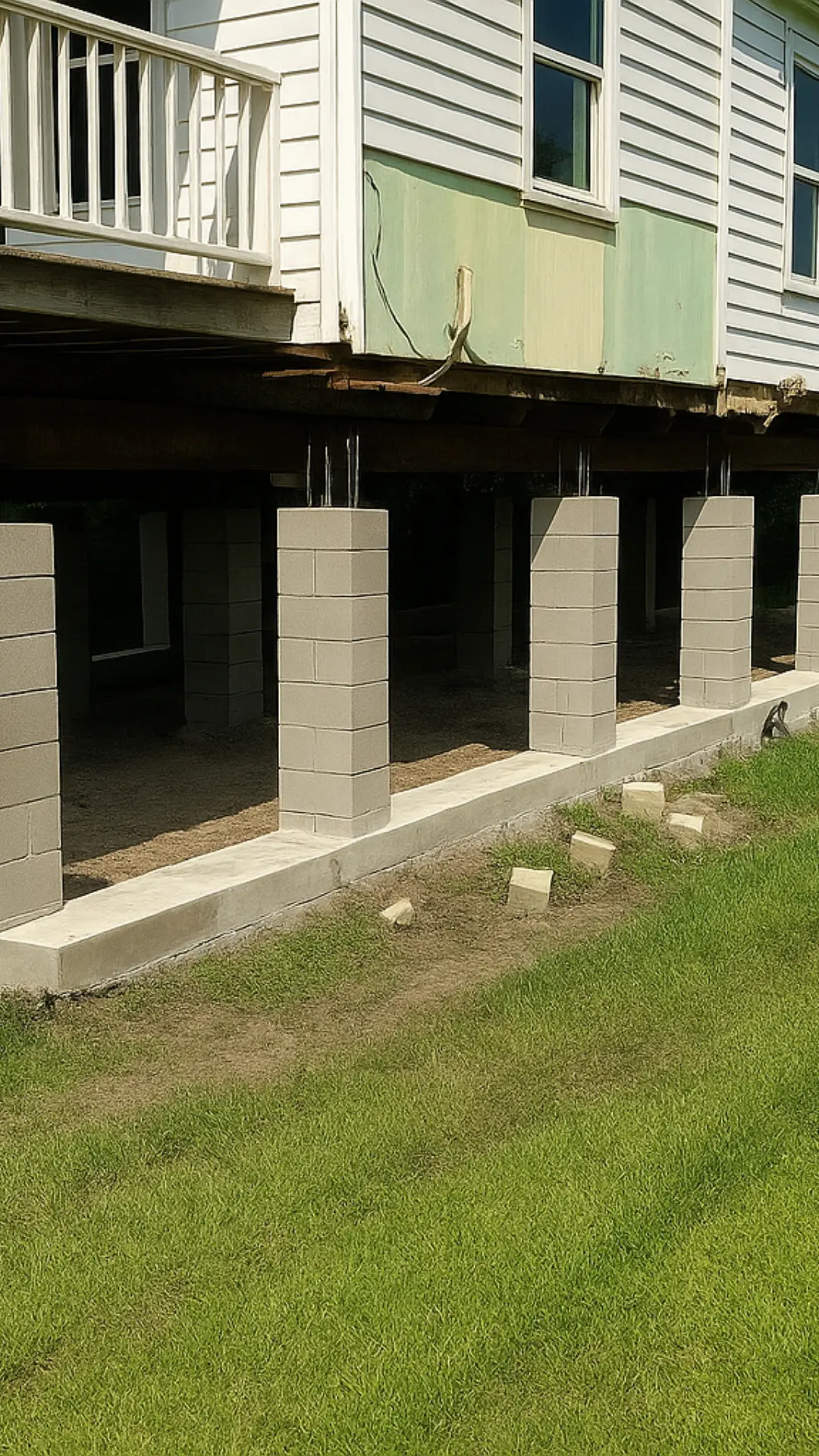When you walk across your home, you expect your floors to feel solid, even, and secure. If you notice a soft spot, a sagging section, or floors that bounce more than they should, it may be an early sign that your floor joists are compromised. These structural components are among the most important (yet often overlooked) parts of your home’s support system.
Floor joists sit beneath your flooring and distribute weight evenly across your foundation. When they weaken, your floor system becomes vulnerable, and your home can experience structural instability. If left ignored, failing floor joists may lead to foundation damage, safety hazards, and significant repair costs down the road.
This guide explains what floor joists do, how to recognize trouble, the causes of joist failure, and the best repair solutions for long-term performance.
What Is a Floor Joist?
A floor joist is a horizontal structural beam used in floor framing to support the flooring above and transfer the load to the home’s foundation and beams. They are typically made of wood or steel and are placed in parallel rows to ensure consistent support across the entire floor.
Floor joists are common in:
- Pier and beam homes
- Crawl-space homes
- Older properties with wooden framing
- Elevated and custom construction homes
Floor joists are essential for maintaining structural stability and safe, level flooring throughout your home.
Signs Your Floor Joists May Be Failing
Early detection helps prevent expensive structural damage. Look for the following red flags:
| Warning Sign | Possible Cause |
|---|---|
| Sagging or uneven floors | Weak or deteriorated joists |
| Floor feels bouncy or springy | Loss of support or joist deflection |
| Cracking tile or separating flooring | Foundation movement affecting joists |
| Musty or damp odor | Crawl space moisture and wood rot |
| Doors sticking or walls cracking | Structural shifting affecting joists |
| Visible rot or pest damage | Moisture exposure or termite activity |
If you notice any of these symptoms, schedule a professional inspection promptly.
Wood vs. Steel Joists
Wood Joists
Wood floor joists are the most traditional and widely used option, especially in older homes and pier-and-beam foundation systems. They are typically made from dimensional lumber or engineered wood products like LVL (laminated veneer lumber) or I-joists.
Wood joists remain popular because they are cost-effective, readily available, and easier to cut, shape, and repair during renovations. This flexibility is particularly beneficial in homes where plumbing, electrical, or HVAC systems run through the floor structure.
However, wood joists are more vulnerable to environmental and biological hazards. Prolonged exposure to moisture can lead to warping, rot, and fungal decay. Additionally, termites and other wood-destroying insects can compromise structural integrity over time if the crawl space or subfloor remains unprotected.
Overall, wood joists perform well when the environment is properly managed, but they require routine inspection and moisture control to ensure long-term stability.
Steel Joists
Steel floor joists are engineered to provide exceptional durability and load-bearing performance. They are commonly used in modern construction or in homes requiring significant structural reinforcement, especially in regions prone to high moisture or heavier floor loads.
A major advantage of steel joists is their resistance to termites, mold, and biological damage. They also maintain their shape over time, reducing the risk of sagging floors and structural shifting. Their strength allows them to span longer distances without additional support, which is beneficial in open-concept home designs.
Despite these advantages, steel joists do have considerations. They are generally more expensive than wood alternatives, both in material and installation costs. Additionally, steel can corrode when exposed to excessive moisture or humidity if not properly treated and insulated. Professional installation and proper waterproofing are essential to maximize their lifespan.
When long-term structural security and minimal maintenance are priorities, steel joists offer a strong and lasting solution.
Moisture Considerations in Joist Performance
Moisture exposure is a critical factor for both wood and steel floor joists. According to research from the U.S. Department of Energy, approximately 80% of crawl-space homes experience moisture-related deterioration over time, making humidity control and routine inspections essential for structural longevity.
Proper ventilation, drainage, and humidity mitigation play a key role in protecting joists regardless of the material used.
Why Floor Joists Fail
Floor joists generally deteriorate due to a combination of environmental stress and structural strain. Understanding the root causes helps ensure the correct repair strategy and prevents recurring issues.
Moisture and Humidity
Crawl spaces naturally retain moisture, especially in humid climates or homes with insufficient ventilation. Over time, wood joists absorb this moisture, leading to rot, mold growth, and fungal decay. Once the fibers soften and weaken, the joists begin to sag or break under load. Moisture damage is one of the leading causes of structural wood failure in pier-and-beam homes, making moisture control and crawl-space protection essential.
Foundation Settlement
When a foundation shifts, the load distribution throughout the home changes. This movement places additional stress on the floor joists, causing them to bow, crack, or detach from their supports. If the foundation isn’t stabilized first, joist repairs become temporary fixes. Professional leveling services, such as our Foundation Repair Humble, help correct settlement issues before joist reinforcement begins.
Termite and Pest Damage
Wood-destroying pests such as termites, carpenter ants, and wood-boring beetles can rapidly weaken joists by eating through the internal wood fibers. This deterioration often goes unnoticed until floors start sinking or bouncing. Once pests compromise the structure, the affected joists must be repaired or replaced, and pest control measures should be implemented immediately after treatment to protect newly restored areas.
Poor Construction or Aging Wood
Some older homes were built with undersized joists or lesser-grade lumber not intended to support current loads, such as heavy appliances or remodeled living spaces. Over time, these joists may crack, bow, or sag under pressure. Aging wood naturally weakens as well, especially in homes without modern moisture barriers or structural upgrades.
Plumbing Leaks
Slow, hidden plumbing leaks in kitchens, bathrooms, or crawl spaces create persistent moisture exposure beneath the floor. Even small leaks can saturate surrounding wood, leading to rot and structural deterioration. In many cases, homeowners only discover plumbing-related joist damage once the floor becomes soft or warped — making proactive leak detection a critical part of preventing joist failure.
Repair Solutions for Damaged Floor Joists
Once floor joists show signs of weakness, professional evaluation and repair are necessary to restore stability and prevent further structural decline. Solutions vary depending on severity and cause.
Structural Sistering
Sistering involves securing new joists alongside existing weakened joists to reinforce their strength. This method is ideal when damage is moderate and the affected joists still retain partial integrity. The added support helps distribute load evenly and improve long-term performance.
Support Beam Installation
In cases where joists are overloaded or spans are too long, additional beams may be installed to better distribute weight. Support beams reduce stress on the joists and help correct sagging floors. This is commonly done in older homes where original framing no longer meets modern structural requirements.
Joist Replacement
Severely deteriorated joists that have rotted, split, or sustained extensive pest damage often require full replacement. This ensures the structural system remains safe and durable. Replacement is particularly common in older crawl-space homes where long-term moisture exposure has compromised multiple joists.
House Leveling
If the problem stems from foundation settlement, leveling the structure is essential before repairing joists. Attempting joist repairs without addressing the root settlement issue may result in recurring damage. Our House Leveling Service Tomball stabilizes the foundation first, so joist repairs remain effective and long-lasting.
Crawl Space Moisture & Drainage Solutions
To stop recurring wood deterioration, crawl-space improvements may be necessary. Strategies include vapor barriers, dehumidifiers, insulation upgrades, and drainage systems. These solutions protect joists from future moisture exposure, helping them remain solid and stable over time.
Pest Remediation and Prevention
When pests cause structural damage, a coordinated repair approach is required. After removing and replacing damaged joists, pest treatment and prevention systems must be applied to avoid repeat infestations. Professional monitoring and sealing entry points further protect the home’s structural wood components.
DIY vs Professional Repair
| Task | DIY Friendly | Professional Recommended |
|---|---|---|
| Minor squeaks | Yes | – |
| Cosmetic leveling | Limited | Yes |
| Replacing structural joists | No | Yes |
| Moisture, mold, or termite damage | No | Yes |
| Major floor sagging | No | Yes |
Joist repairs influence the structural integrity of your home. Professional service ensures long-term safety and compliance with building standards.
Why Homeowners Trust FNF Foundation
FNF Foundation provides expert diagnostics and repair services for joist damage across Texas. We specialize in:
- Pier and beam foundation repair Humble
- Crawl space structural services
- Joist reinforcement and replacement
- House leveling
- Termite and moisture-damage remediation
- Concrete slab foundation repair Humble
We serve homeowners in Katy, Cypress, Richmond, Pearland, Tomball, Spring, Baytown, and surrounding areas.
Our experienced team ensures precise inspections, durable repairs, and long-term foundation stability.
Schedule a Professional Floor Joist Inspection
If your floors feel soft, uneven, or unstable, schedule a structural evaluation.
Addressing issues early prevents costly damage and protects your home’s value.
Contact FNF Foundation today to request an expert inspection and long-term repair plan.
Frequently Asked Questions
How long do floor joists last?
Wood joists typically last 50 years or longer with proper moisture control. Steel joists can last significantly longer, depending on conditions.
Can damaged joists cause floors to collapse?
In severe cases, yes. Persistent sagging or deterioration should be evaluated immediately to avoid safety hazards.
Can joist issues be repaired without replacing them?
Many cases allow reinforcement or sistering, although replacement is necessary for extensive decay or structural failure.
Why do crawl-space homes develop joist problems more often?
Crawl spaces hold moisture, creating ideal conditions for rot, mold, and insect activity.
Does repairing joists increase home value?
Yes. Structural repairs protect property value and improve buyer confidence.







